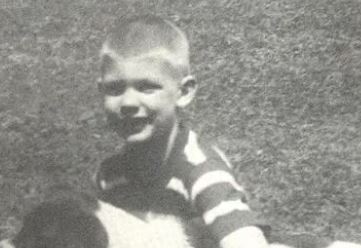A childhood photograph of Jeffrey Dahmer has been circulating widely on social platforms, prompting another wave of online fascination and debate about how images from a killer’s early life are framed and consumed. The picture—shared in recent days in reposts on X with the caption, “A photo of Jeffrey Dahmer when he was a kid,” and in earlier threads on Reddit and other feeds—shows a boy identified as Dahmer years before the murders that later made him infamous. The renewed attention follows multiple widely viewed posts on X from history-and-fact accounts that resurfaced the image with minimal context, drawing tens of thousands of views and a stream of comments in which users alternated between calling the portrait “ordinary” and projecting ominous meaning onto it in hindsight. In one instance, the picture was published with the brief line “A photo of Jeffrey Dahmer when he was a kid,” a minimal caption that left interpretation to the replies; another account posted a near-identical line alongside the same image, helping to push it back into trending territory.
Beyond the basic portrait, a separate childhood shot that has circulated for months depicts a youngster identified as Dahmer dressed for Halloween in a T-shirt featuring a devil graphic, an archival-style photograph that repeatedly reappears on Reddit’s history and nostalgia forums. That seasonal image, which commenters often frame as eerie when viewed through the lens of later events, has been re-shared in cycles—especially around late October—by accounts that curate historical ephemera. The two threads of circulation—a plain childhood portrait and the Halloween snapshot—have together fed the latest spike in attention, with users juxtaposing “ordinary kid” language under the former and darker inferences under the latter. Even in those comment sections, posters frequently note that nothing in the pictures constitutes evidence of future crimes; the photographs persist online largely because people continue to look for clues that are not, in fact, visible.
The fresh round of sharing is the latest example of how a single asset—here, a simple childhood picture—can move across platforms with small caption tweaks and accumulate reach as it goes. On X, the most recent shares have collected views in the tens of thousands in short order, as measured on the platform’s public counters; one history-themed account’s version of the post last year also drew traction, illustrating how little is required to reanimate interest in long-known material. That limited framing has become standard for true-crime-adjacent content, where images are often posted without extended sourcing or provenance and left to audience interpretation. In this case, the viral caption offered no more than the identification of the child as Dahmer and allowed the replies to do the interpretive work, an approach that produced the familiar split between those who cautioned against mythologising and those who insisted that menace could be glimpsed in a child’s face only because of what is known now. A photo of Jeffrey Dahmer when he was a kid pic.twitter.com/qem8jjMWiz — Fascinating (@fasc1nate) October 24, 2025
As the image bounced around feeds, some users contrasted the portrait with Dahmer’s well-documented high-school years, where he has been photographed with classmates and appears in club pictures that later became part of his legend. Those photographs have their own, separate online life: forum posts and social snippets periodically cite accounts from former classmates that Dahmer would “prank” yearbook photographers by slipping into group shots, anecdotes that were repeated in fan-curated true-crime spaces long before the current Netflix era. The latest circulation of the childhood image has revived that cluster of memories in comments, with people resurfacing the well-known claims that his face was blacked out in certain club photos by exasperated staff—stories that, like the images themselves, tend to be recounted as lore with varying degrees of sourcing but are repeatedly attached to the same handful of scanned yearbook pages.
